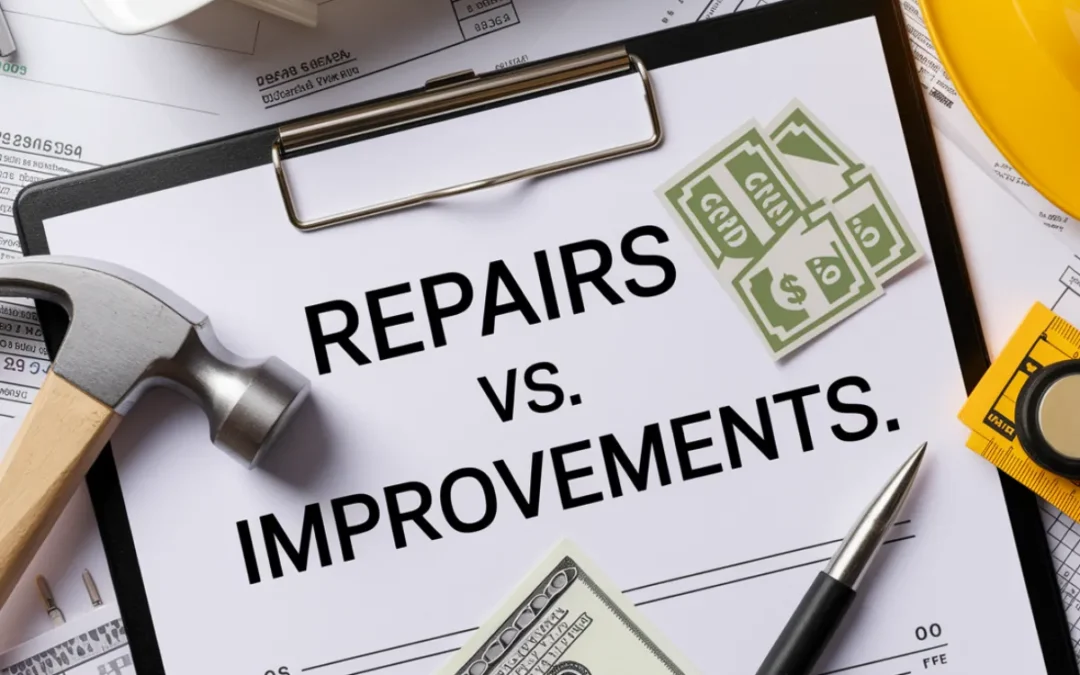- Version 1.0
- Download 0
- File Size 400 KB
- File Count 1
- Create Date October 17, 2025
- Last Updated October 11, 2025
Repairs vs. Improvements 2025 – What’s Deductible and What’s Not
Correctly distinguishing between a deductible repair and a capitalized improvement can make a big difference on your tax return. Repairs are generally deductible in the year they are paid, while improvements must be capitalized and depreciated over time. This guide explains how to classify these costs and provides practical examples.
Repairs vs. Improvements – The Basics
Repairs keep the property in good operating condition without adding significant value or extending its life. Improvements add value, restore property to like-new condition, or adapt it to a new use. Improvements must be capitalized and depreciated as if they were new property.
Examples
Example 1: Nina owns a truck for her contracting business. Repairing the truck after damage and routine maintenance, like oil changes, are deductible repairs. Installing a hydraulic lift that improves its functionality is an improvement that must be capitalized and depreciated.
Example 2: Glen owns a rental property. Fixing a leaking roof is a deductible repair, but replacing the entire roof is a capitalized improvement that increases the property’s value and lifespan.
Common Repairs vs. Improvements
| Repairs (Deductible) | Improvements (Capitalized) |
|---|---|
| Repainting | Room additions or remodeling |
| Fixing gutters or leaks | New roof or flooring |
| Replacing broken windows | Installing heating, cooling, or plumbing systems |
| Servicing equipment | Upgrading electrical wiring |
| Cleaning and maintenance | Landscaping or adding a driveway |
Note: Improvements are depreciated based on the class life of the property. For example, most business equipment is depreciated over 5–7 years, residential rental property over 27.5 years, and commercial real estate over 39 years.
Additional Examples
Example 3: Penny replaces eight of the 24 windows in her office building, representing 25% of the total surface area. The cost is a deductible repair because it’s not a major component. If she replaced 16 windows (two-thirds of the total), the cost would be capitalized as an improvement.
Business Use Requirement
Only expenses related to business or rental use qualify for repair deductions. Homeowners without business use cannot deduct repair costs, as these are personal expenses. Improvements, however, add to the property’s basis and may reduce gain when sold.
Example: Olive spent $1,200 repairing walls and tiles in her personal home. Because there is no business use, the expenses are individual and not deductible.
Recordkeeping Tips
Keep detailed records of all repairs and improvements. Ask contractors to provide itemized invoices, separating repair costs from improvements. When repairs and improvements are made together, the IRS may classify the entire project as an improvement unless amounts are clearly separated.
Court Case Example
A taxpayer added restrooms, a lunch area, and ramps to manufacturing plants while repainting and “fixing up” the interior. The IRS reclassified all costs as capital improvements, and the court agreed. Because the improvements increased value and adapted the buildings for new use, they were not deductible as repairs. The repainting would have been deductible on its own, but since it was part of a larger improvement project and costs were not separated, all expenses had to be capitalized.
Download the Repairs vs. Improvements Tax Guide or contact us for help determining how to classify your business expenses correctly.


